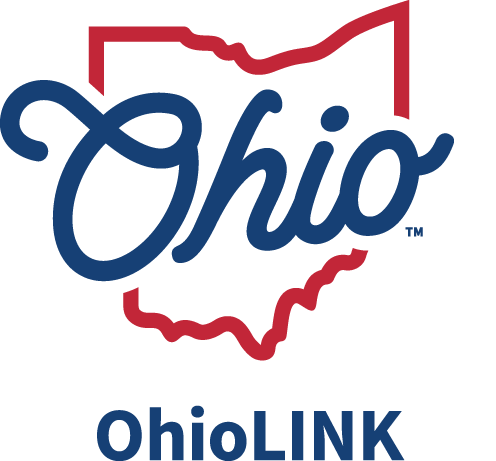_____ 1. Map your local PTYPES to OhioLINK PTYPES
Patron Type Conversion Table Sample
Every local patron type must be mapped to an OhioLINK patron type. Any and all local PTYPES that are not entitled to PCIRC privileges should be mapped to OhioLINK PTYPE 206. OhioLINK PTYPES 200-205 all get standard borrowing privileges. The only reason to make a distinction at all is so that the statistics will show what patron types are using the system and to correctly apply the patron block table. Most patron types are allowed to check outmaterial for 21 days (Faculty get 42 days).The number of loans allowed and the financial blocks imposed differ by patron type especially for SearchOhio ptypes. (Remember that courtesy patrons are allowed, by policy, to have PCIRC privileges.)
Send this conversion, or mapping, table to the appropriate III contact person at least two weeks before your library is scheduled to implement PCIRC.
_____ 2. Map your local ITYPES to OhioLINK ITYPES
Item Type Conversion Table Sample
Every local item type must be mapped to an OhioLINK item type. All materials that are eligible for loan through PCIRC should be mapped to one of the following OhioLINK itypes: 200, 208, 209 or 212. Only materials mapped these three itypes can be requested. Materials mapped to any of the other available itypes from OhioLINK will not be requestable through PCIRC. Itype 200 is used for book or monograph like material. Itype 208 is used for media and has only a one week loan period with no renewal. Itype 209 is for microforms and has the same loan period as 200. Itype 212 is for bound journals and has the same loan period as for 208. If an institution wishes to allow some of their media to circulate on PCIRC but not others, then two local itypes must be created and mapped to either 205 (not requestable) or 208 (requestable). Itype 200 can also be used for media that is allowed to go out for the longer 3 week period.
Send this conversion, or mapping, table to the appropriate III contact person at least two weeks before your library is scheduled to implement PCIRC.
_____ 3. Add OhioLINK PTYPES to your local PTYPE table.
_____ 4. Add OhioLINK ITYPES to your local ITYPE table.
_____ 5. Add OhioLINK PTYPES, with the appropriate block parameters to your local block table.
The Patron Block Table is set up to correctly assign OhioLINK privileges and to enforce OhioLINK policies. Individual libraries should set their local parameters to match OhioLINK policies for items lent through PCIRC.
_____ 6. Make sure that your local status codes translate properly in the Central Site Catalog
Your institution may define locally only those codes labeled as 'Locally Defined'. All other codes have been defined by III/OhioLINK. All central site displays have been agreed upon by OhioLINK members.
An example of a system defined code is 'b' meaning "At Bindery". You may change the local display to read anything that you want, but it will still be displayed as "At Bindery" in the central catalog. Beware that the central catalog translation for even the locally defined codes is the same for all libraries. You need to make sure that the local code you use properly translates in the Central Catalog. For example, you may want to define locally a status code to use when materials are temporarily placed in a display case. A good choice for this would be the letters 'j' or 'k' because they translate into "Temp Unavail" in the central catalog. Either of these status codes tells OhioLINK users that they cannot request this material right now, but it may be possible to request it sometime in the future. If your library were to chose a 'v' or a 'g', though, the status displayed would be either 'Missing' or 'NonCirc' which is misleading.
You need to be careful when working with the status code table, because it allows one code to be defined in more than one way. If your library has given more than one person authority to define status codes, make sure that their efforts and their information is carefully coordinated.
Remember that only items with the status "-" (the status III has defined as Available) are eligible for OhioLINK circulation. Some libraries have unintentionally prohibited requests by using a status code to give their local users information that stopped PCIRC requests. For example, if you put a status on item records that you send to a storage facility, that item will not be requestable through OhioLINK, even though there is no reason to stop it from being requested.
_____ 6a. Add PCIRC status codes to your local status code table.
Add the following PCIRC status codes to your status code table (see Central Site Status Codes for definitions): @ # % & ( ) _
_____ 7. Add all 5-digit OhioLINK institutional codes to your local Branch (Location Code) Table.
Pickup Anywhere Branch Codes (.xlsx) (formerly Policy Handbook Appendix A.7.b)
You will need to add the locations in both of these tables to your local Branch Location table. You need only enter a Branch Name for each location. A circulation address is not needed (it is pulled from another file for paging slips) but you must enter an address number for each location. You can choose any valid address number you want. When entering these locations, please also include your 5 character code and your Pickup Anywhere codes.
Please be sure to enter all of the codes correctly. Incorrect location codes can cause PCIRC transactions to go astray and not be completed. In entering the codes, remember that for the 5 character code, the first two characters are alphabetic characters followed a 1 (the numeral one), and two more characters (SearchOhio 5 character codes do not always follow this format). For Pickup Anywhere locations, they all begin with the letter y followed by a numeral 0 (zero) followed by the unique 3 digit code for each location.
_____ 8. Enter the OhioLINK Notice Texts in your local Notice Text file.
Paging Slip (.pdf) (formerly Policy Handbook Appendix A.8.b)
Pickup Anywhere Paging Slip (.pdf) (formerly Policy Handbook Appendix A.8.c)
You need to take care of the notice texts before you define the OhioLINK loan rules in your local system because the text numbers will be different in every institution and the text numbers are a part of the loan rules.
Review your paging slip text and try to create a generic text that will apply to both local paging slips and OhioLINK paging slips as both use the same text file. This is the text that appears at the top of the paging slip. The wording on the bottom half is the same for everyone and can not be changed locally.
_____ 9. Enter the OhioLINK Loan Rules into your local Loan Rule table.
You will need to enter at least two new loan rules:
a. OhioLINK Institutional Loan Rule
This is the rule that governs the check-out of materials to off-campus borrowers. It loans the lending library's book to the borrower's library for 21 days. Some elements of the loan rule are constant for all OhioLINK members; other elements, like the notice text numbers, must be determined uniquely by each library.
Institutional Loan Rule (non-Faculty)
Institutional Loan Rule (Faculty)
b. OhioLINK Patron-initiated Loan Rule
This is the rule that governs the check-out of another institution's book to your patrons. It loans the material for 21 days, allows one renewal, and determines appropriate fines and notices to be generated in your local system. Like the Institutional Loan Rule, some of the elements are constant for everyone, and others must be determined locally.
Patron Initiated Loan Rule (non-Faculty)
Patron Initiated Loan Rule (Faculty)
c. Media Loan Rule
The Media Loan Rule applies to both institutional checkout and the patron checkout. It allows for media material to be lent for 7 days with 3 renewals. Material under this loan rule are checked out at the owning institution for 7 days, then when the patron checks out the material the loan date is extended so that the patron gets the full 7 days.
d. Direct Borrowing Loan Rule
You can use the Visiting Patron function to check out materials to borrowers who visit from other OhioLINK libraries. The Visiting Patron function uses the regular Institutional Loan Rule.
_____ 10. Add entries into your Loan Rule Determiner Table for the OhioLINK Loan Rules that you have created.
The entries that you make in this table will depend on your local ITYPES, PTYPES, and Loan Rule numbers. Instead of trying to create loan rules for every OhioLINK institutional branch (location), you should wild card the locations, and place the OhioLINK rules at the beginning of your Rule Determiner Table.
To set up the determiner table for the Institutional Loan Rule (when your institution is lending an item to another library), use your own item types and the OhioLINK (200's) patron types.
To set up the determiner table for the Patron-initiated Loan Rule (when your patron is borrowing an item from another library), use your own patron types and the OhioLINK (200's) item types.
_____ 11. Decide which field in the patron record your institution wants to use to verify patron requests.
III uses, by default, the patron barcode field, but a different indexed field (like social security number or university ID) can be used.
Let your III contact person know which field you want to use and what the prompt should read.
_____ 12. Determine local pick-up locations.
Pick-up locations allow users to choose where to pick up the materials they have requested through OhioLINK. They must choose a pick-up location every time they place a request. You may have only one pickup location for all of your users. Fill out this table even if you have just one pickup location.
Pickup Anywhere Branch Codes (.xlsx) (formerly Policy Handbook Appendix A.12.b)
Send your III contact person a table that lists:
a. Display Name--This is the wording that users see when they are prompted to choose a pickup location. The display label also serves to tell the users where the material that they requested is being held. If you have only one pickup location, no choice will display to users, but you must still fill this out. 30 characters.
b. Print Name--This is the wording that appears on the paging slip as the PICKUP AT location. This tells the patron where to pick up the item. 20 characters
c. Courier stop--This is the name of the delivery stop, which prints on the paging slip below the name of the borrowing library. This location name should match your Priority shipping label, to allow the lending library to select the correct shipping label. Not every potential pickup location is a US Cargo stop, but every potential pickup location must be associated with a USC stop. Each stop is associated with a 3 digit code that is unique to the stop. This must be entered at the end of the delivery name with 5 blank characters between the end of the name and the beginning of the 3 digit code. 32 characters
d. Loc Code--For every pickup location listed, III needs to know the branch (location) code for that location, as it is entered in your local system. This code will appear in the patron record.
Add Pickup Anywhere locations to your local branch table. For every possible Pickup Anywhere location in the state, there is a corresponding pickup location entry in your branch code table. These entries are supplied by OhioLINK but must be entered in the local table manually.

